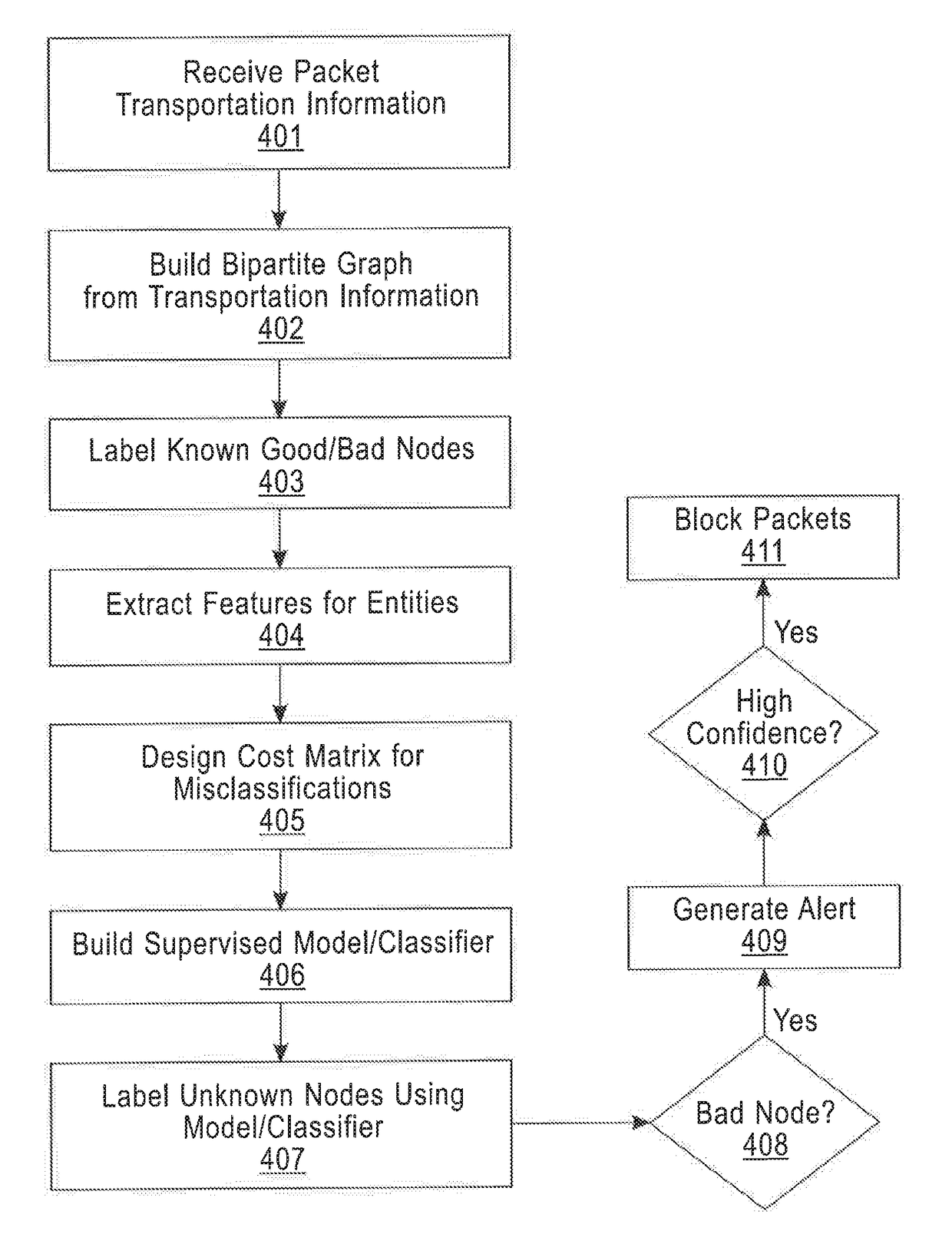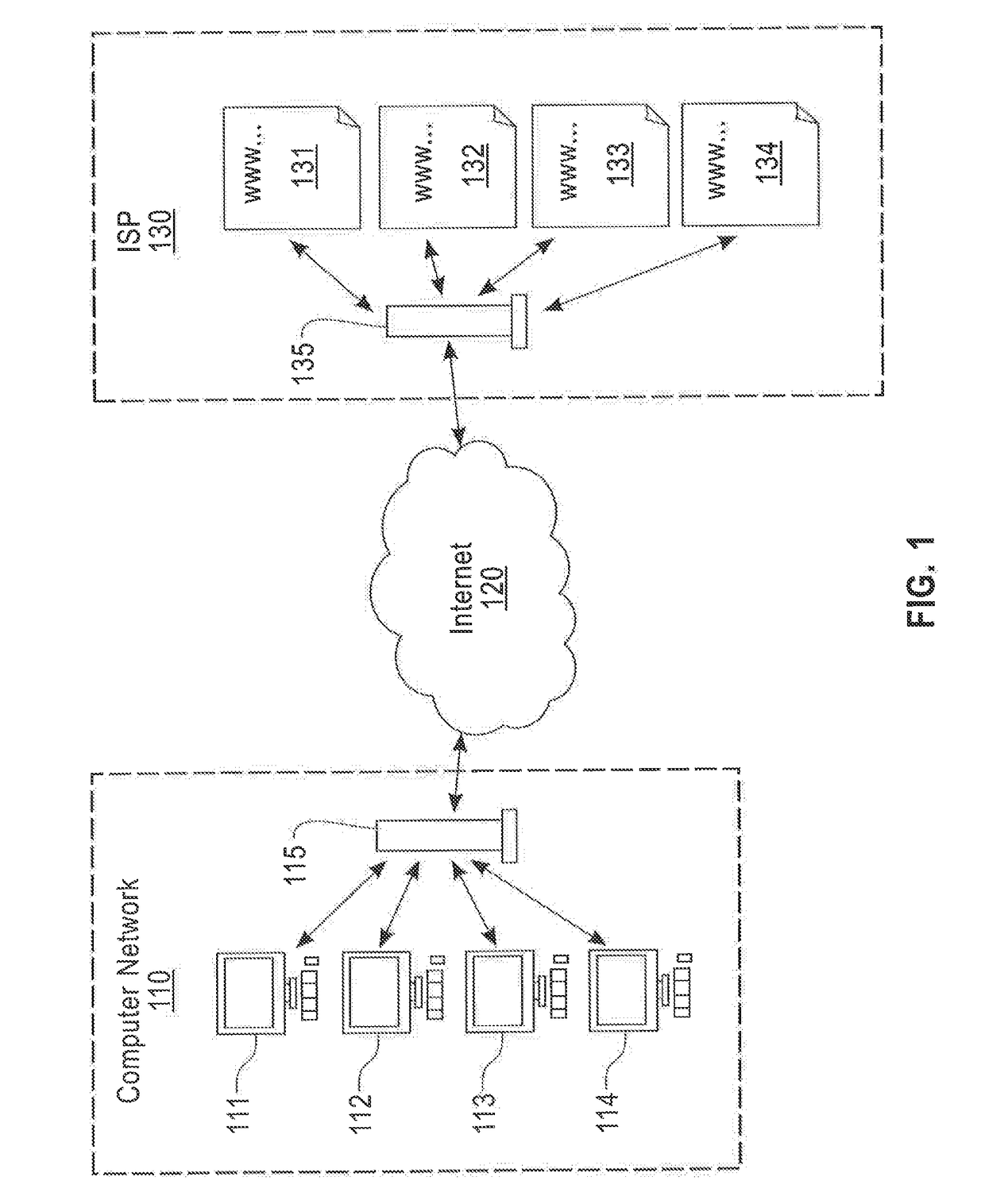Network security apparatus and method of detecting malicious behavior in computer networks via cost-sensitive and connectivity constrained classification
a network security and network security technology, applied in the field of network security apparatus, can solve the problems of routing traffic to and from malicious-labeled hosts or domains, and achieve the effect of increasing the probability of being positively labeled
- Summary
- Abstract
- Description
- Claims
- Application Information
AI Technical Summary
Benefits of technology
Problems solved by technology
Method used
Image
Examples
Embodiment Construction
[0024]In describing exemplary embodiments of the present disclosure illustrated in the drawings, specific terminology is employed for sake of clarity. However, the present disclosure is not intended to be limited to the specific terminology so selected, and it is to be understood that each specific element includes all technical equivalents which operate in a similar manner.
[0025]Exemplary embodiments of the present invention seek to mitigate damage associated with malicious attack by analyzing network traffic to identify relationships between hosts, which may be computerized devices connected to a computer network, such as desktop computers, laptop computers, mobile devices, and other connected devices, and domains, which may be content that is hosted and made available over the computer network at a particular address (e.g. URL), such as websites, web services, and the like.
[0026]Cybersecurity may be provided by accurately determining whether each host and each domain is malicious...
PUM
 Login to View More
Login to View More Abstract
Description
Claims
Application Information
 Login to View More
Login to View More - R&D
- Intellectual Property
- Life Sciences
- Materials
- Tech Scout
- Unparalleled Data Quality
- Higher Quality Content
- 60% Fewer Hallucinations
Browse by: Latest US Patents, China's latest patents, Technical Efficacy Thesaurus, Application Domain, Technology Topic, Popular Technical Reports.
© 2025 PatSnap. All rights reserved.Legal|Privacy policy|Modern Slavery Act Transparency Statement|Sitemap|About US| Contact US: help@patsnap.com



